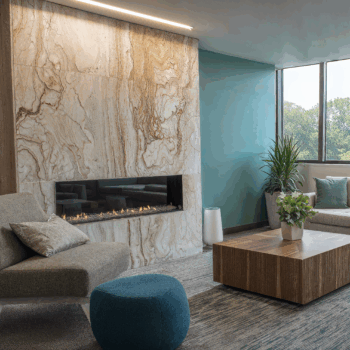
Practical hospitality: leveraging antimicrobial textiles
Antimicrobial textiles, either natural or fabrics treated with agents that inhibit the growth of bacteria, fungi, and other microorganisms, offer significant benefits in high-traffic hospitality spaces. By reducing the microbial load on surfaces like linens and upholstery, antimicrobial textiles help prevent the spread of infections, enhance guest safety, and improve overall cleanliness. Additionally, these textiles can extend the lifespan of the fabrics by reducing odors and stains, leading to lower maintenance costs and a better guest experience.
Hotels, resorts, and other accommodation facilities cater to numerous guests every day, creating an environment where pathogens can easily spread. Traditional cleaning methods, while essential, may not always suffice in eliminating all microorganisms, especially in hard-to-reach areas or on frequently used items. Antimicrobial textiles provide an added layer of protection by continuously inhibiting the growth of harmful microbes, offering a proactive solution to maintaining hygiene standards.
The technology behind antimicrobial textiles varies. Some textiles are naturally antimicrobial, such as wool, which has inherent properties that resist bacterial growth. Others are treated with antimicrobial agents during the manufacturing process. These agents can be chemical compounds like silver ions, copper, or zinc, which are known for their antimicrobial properties. Alternatively, organic antimicrobial treatments derived from natural sources like chitosan (from crustacean shells), or plant extracts can be used. The choice of antimicrobial agent depends on factors such as the intended use of the fabric, desired durability, and environmental considerations.
Fabrics used in these environments, from bed linens to curtains, are subject to constant use allowing them to collect odors and stains. Antimicrobial treatments help to break down organic matter that causes these contaminates, ensuring that the textiles remain fresh and visually appealing for longer periods. This enhances the guest experience and reduces the frequency of laundering and replacements.
Antimicrobial textiles are revolutionizing the way the hospitality industry approaches cleanliness and safety. Their ability to inhibit the growth of harmful microorganisms, prevent odors and stains, and contribute to a healthier environment makes them an invaluable asset in high-traffic spaces. As the industry continues to prioritize guest safety and sustainability, the adoption of antimicrobial textiles will undoubtedly play a crucial role in enhancing efficiency and guest experiences.
Designing a hospitality space and looking for some inspiration? Check out our article on incorporating Tile and Stone in Hospitality Design.








